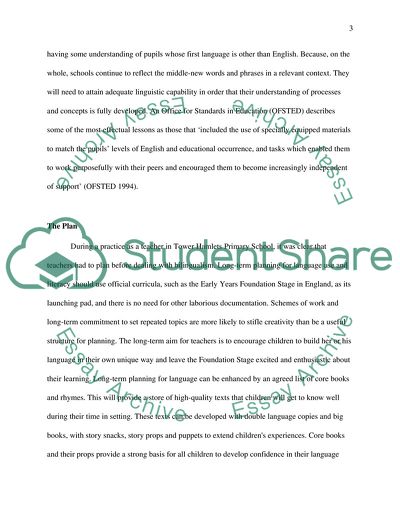Cite this document
(The Education of Bilingual Children in Tower Hamlets Primary School in East England Case Study Example | Topics and Well Written Essays - 2500 words, n.d.)
The Education of Bilingual Children in Tower Hamlets Primary School in East England Case Study Example | Topics and Well Written Essays - 2500 words. https://studentshare.org/education/1805235-policy-and-practice-in-the-education-of-bilingual-children
The Education of Bilingual Children in Tower Hamlets Primary School in East England Case Study Example | Topics and Well Written Essays - 2500 words. https://studentshare.org/education/1805235-policy-and-practice-in-the-education-of-bilingual-children
(The Education of Bilingual Children in Tower Hamlets Primary School in East England Case Study Example | Topics and Well Written Essays - 2500 Words)
The Education of Bilingual Children in Tower Hamlets Primary School in East England Case Study Example | Topics and Well Written Essays - 2500 Words. https://studentshare.org/education/1805235-policy-and-practice-in-the-education-of-bilingual-children.
The Education of Bilingual Children in Tower Hamlets Primary School in East England Case Study Example | Topics and Well Written Essays - 2500 Words. https://studentshare.org/education/1805235-policy-and-practice-in-the-education-of-bilingual-children.
“The Education of Bilingual Children in Tower Hamlets Primary School in East England Case Study Example | Topics and Well Written Essays - 2500 Words”. https://studentshare.org/education/1805235-policy-and-practice-in-the-education-of-bilingual-children.


